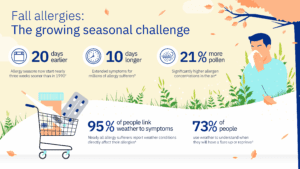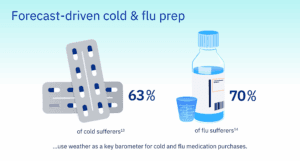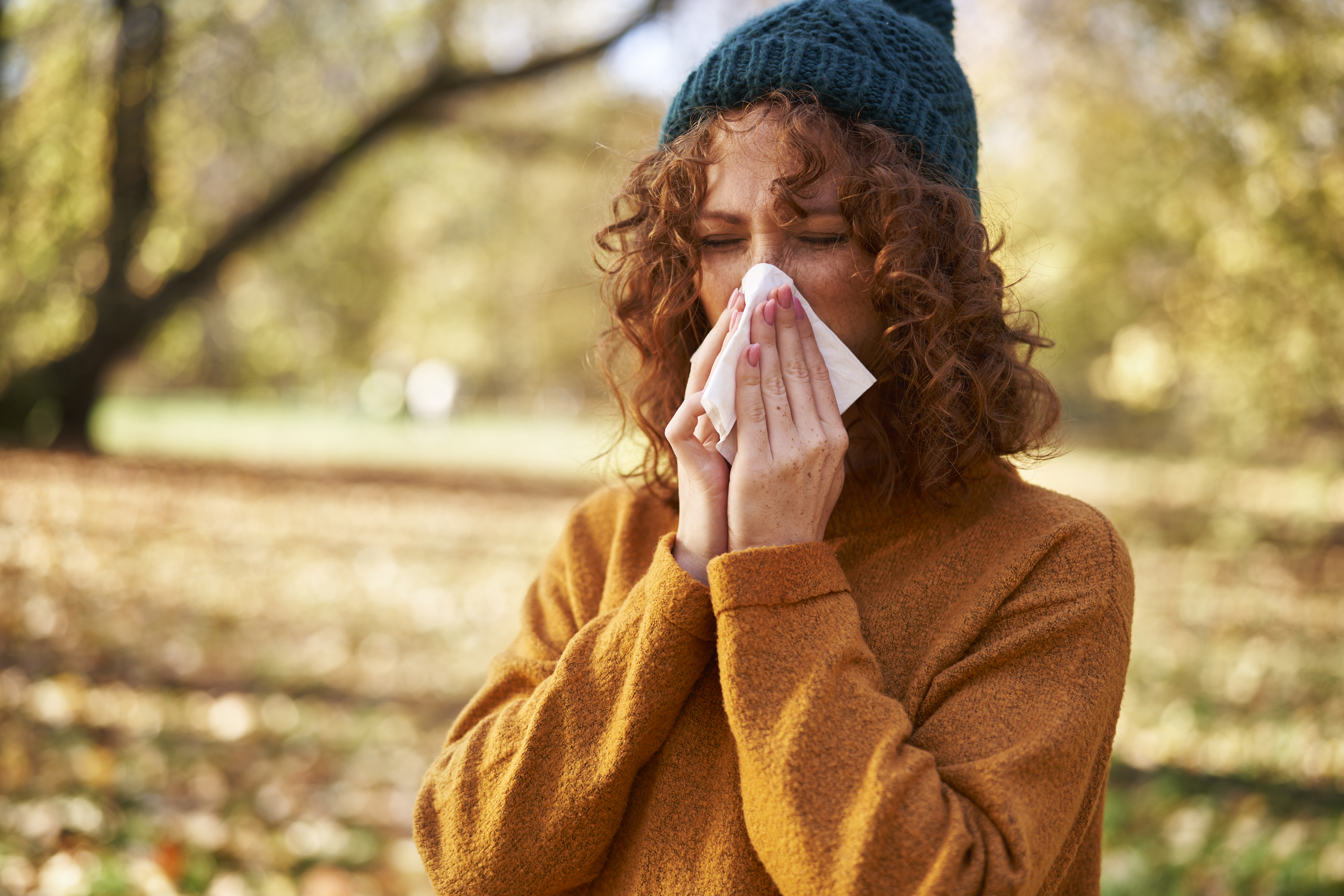Weather intelligence for the future: Crafting a strategic enterprise approach to changing environmental conditions
Continue readingAs the days grow shorter and fall patterns begin to emerge, something else is shifting too — the impact of weather on health. Fall isn’t just pumpkin spice season, it’s also sneeze and sniffle season, creating prime marketing moments for health and wellness brands.
Weather is the key to connecting your health and wellness marketing strategies with customers’ real-time needs. When that first cold snap hits and ragweed counts climb, people don’t just reach for their sweaters — they reach for relief.
How can brands use fall weather patterns to improve health and wellness marketing?
There are new trends in pharmaceutical marketing each year, but one constant remains: seasonal weather and behavior are inextricably linked. Understanding these weather-driven behavior patterns isn’t just clever marketing — it’s a strategic must-have. With insights from the world’s most accurate forecaster,1 marketers can meet people exactly when they need you most. When planning fall marketing campaigns, health and wellness brands can leverage these seasonal shifts into precisely timed opportunities.

Distinct weather factors driving fall allergy season
Ragweed rebellion
Ragweed is fall’s most prevalent allergen, triggering seasonal health issues in 75% of allergy sufferers.7 When autumn weather turns dry, ragweed plants activate a survival response. During these times, they release massive amounts of pollen that can travel hundreds of miles on wind currents. As a result, dry, windy fall days can create widespread allergy conditions affecting millions of people.8
The mold multiplier
Mold thrives in fall’s damp environments, growing on soil, leaf litter, and decaying plant matter. Fall weather creates a perfect cycle: wet periods encourage the growth of mold. Later, dry spells trigger massive spore release into the air. This wet-dry pattern, combined with naturally dying and falling leaves, prolongs allergy symptoms throughout the entire fall season.9
Allergy forecasting yields actionable insights
A leading nasal antihistamine spray reached people who turned to The Weather Channel’s allergy forecast. Using AI predictive modeling, weather and anonymized health claims data were translated into actionable insights. People were empowered to understand their local allergy risk up to 15 days in advance. This enabled this brand to garner strong brand favorability and purchase intent.
lift in brand favorability among allergy sufferers10
lift in purchase intent among allergy sufferers11
From spring’s pollen peaks to fall’s ragweed and mold surge, weather intelligence keeps you connected with allergy sufferers year-round. Weather-driven patterns create predictable customer moments. That’s when your target audience actively seeks relief products.
The chill factor: How cold weather fuels viral spread
Fall’s cooler temperatures and lower humidity create ideal mixes for cold and flu viruses to thrive. Under these conditions, viruses become more stable and transmissible. Cooler temperatures also cause people to retreat indoors, where viruses are more likely to spread.12 This explains why cold and flu sufferers use weather to guide their medication purchases.

As cold and flu season intensifies through winter, discover how to winterproof your health and wellness strategies.
Predicting cold & flu proves successful
A global flu vaccine leader combined weather data with anonymized health claims to reach at-risk audiences across the digital ecosystem with flu vaccine ads 14 days before local flu risk spiked.15 It’s perfect proof that timing health messaging with weather insights drives real business impact:
lift in familiarity & favorability among target audiences16
bump in search intent17
Chloraseptic reached parents on The Weather Channel digital properties during peak moments of relevance by targeting weather conditions that drive sore throat symptoms. They also retargeted users who engaged with the Cold & Flu Forecast, which utilizes AI to predict flu risk 15 days in advance. The results:
lift in purchase intent among parents with young children18
increase in conversion rate throughout the campaign19
Seasonal shifts, strategic marketing opportunities
Fall’s weather patterns create predictable moments when people turn to health solutions — from ragweed surges to peaks in viral transmission. Now is the time to transform your health and wellness marketing strategies for greater impact. The Weather Company’s advertising solutions boost brand relevance and efficiency when those critical, seasonal health decisions matter most. And that’s a pattern marketers can never overlook.
Let's talk
What’s your weather strategy? To learn more about harnessing the power of weather to increase engagement and drive growth, contact our advertising experts today.
Contact Advertising1 ForecastWatch, Global and Regional Weather Forecast Accuracy Overview, 2021-2024, commissioned by The Weather Company
2 Guardian article: Pollen season grows 20 days in 30 years as climate crisis hits hay fever sufferers
3 2025 Allergy Capitals report: The most challenging places to live with allergies
4 PNAS article: Anthropogenic climate change is worsening North American pollen seasons
5 6 Weather and Health Impact Study, Sago for The Weather Company, health-affected consumers, March 2024
7 Bayer Global article: Pollen Allergy: A Growing Problem
8 Allergy and Asthma Network article: Ragweed allergies
9 Climate Central article: Later Fall Frost Extends Allergy Season
10 11 Millward Brown, August – October 2022
12 Scientific reports, 2019 article: Association between viral seasonality and meteorological factors
13 14 Weather and Health Impact Study, Sago for The Weather Company, March 2024
15 16 17 Disqo 9/18 – 11/30/23
18 Lucid Measurement Study (11/13/23 – 1/31/24)
19 Campaign Intelligence Measurement Study (11/13/23 – 1/31/24)







